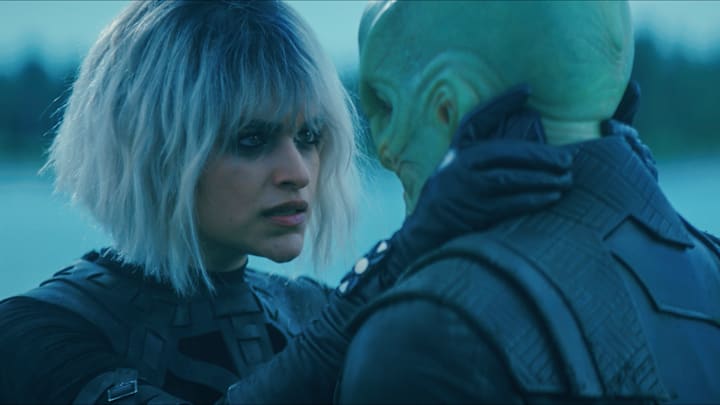Star Trek: Discovery brought the Breen back, last seen at the tale end of the Dominion War during the closing season of Star Trek: Deep Space Nine. The alien race, specifically what they looked like was left in a shroud of mystery for decades. No one thought they'd ever find out what they looked like, let alone more about the alien species as a whole. That changed, however, with Discovery.
During the fifth and final season of the show, the creative heads of the show opted to bring back the alien race, leaving little left to the imagination as to what they look like or why they behave the way they do. In doing so, they pulled back the blinds, revealing a smove but ridged-faced alien, who has two states; a physical and a liquid one.
The reveal has been received well by some, not so well by others but it's another attempt by Star Trek to further expand on previous concepts. Yet, why did they go in the direction they did with the Breen? Well, Carlos Cisco decided to further explain the concepts on the 7th Rule Podcast, hosted by Deep Space Nine star Cirroc Lofton and co-host Ryan T. Husk. Cisco co-wrote the fifth episode of season five, "Mirrors", and explained to the podcast why they went in the direction that they did with the Breen, saying (via ScreenRant)
""Rewatching the episode, it’s a little muddy in there in terms of how we explained it...Our thinking was the Breen as sort of a natural species were bifurcated in the sense that they can be both gelatinous and solid in that sense. But the solid state takes an intense amount of focus and concentration in order to maintain. And it was basically there as this is your protective shell. This is how you stay safe. This is how you protect your soft, gelatinous innards from a hostile, outside world.
And then as they developed the refrigeration suits, they lost the need for that both evolutionarily and culturally, and it became a sort of cultural anathema. You don’t show people your solid face because that means you’re weak...The way we talked about them was sort of like a meritocracy of warriors, but more structured than how we’ve seen Klingons. It’s not necessarily about how good you are at killing but it’s all about what your placement in the world is based on your performance. And the suits sort of erase any unique signifier about a person, making them hone in on what your actions and deeds are.
There was talk along the season [of] are the multiple species under the mask? I think it’s not solidified either way… But we’re focused on these guys, these Jelly Breens, if you will"
The Breen as a concept hasn't really been explored before and the explanations that Cisco gave are fine, but they feel like they're lacking something that makes them very unique. In a way they sound like the Borg with the concept being their suit hide their individuality. The idea that the Breen weren't a species but a group, made of different aliens gave the gimmick some more depth. Still similar to the Borg or the Xindi, but one that could've been explored further by having non-Breen species joining up due to their belief in the Breen way of life.
And not because they were forced to. That would've been a fun gimmick, but instead we got the Mane-E-Faces version of Star Trek aliens.
